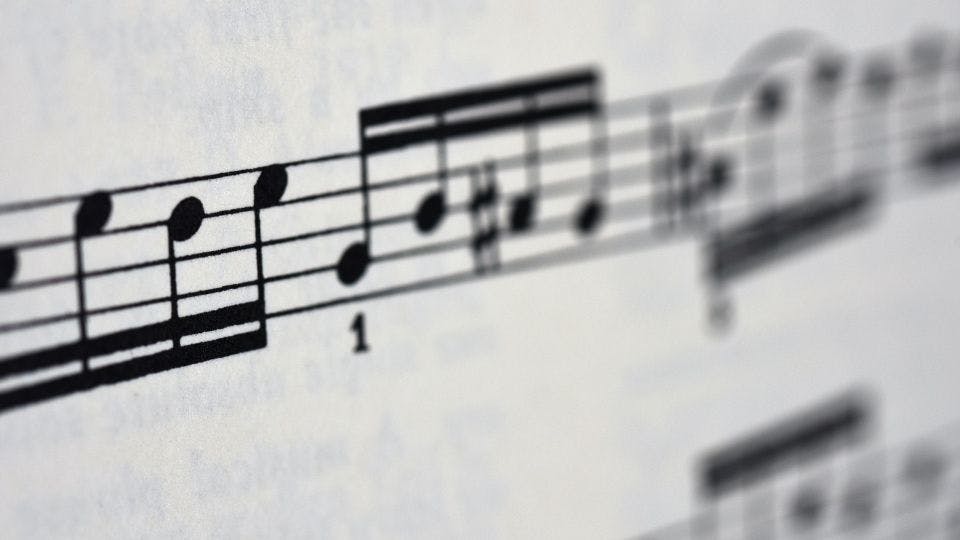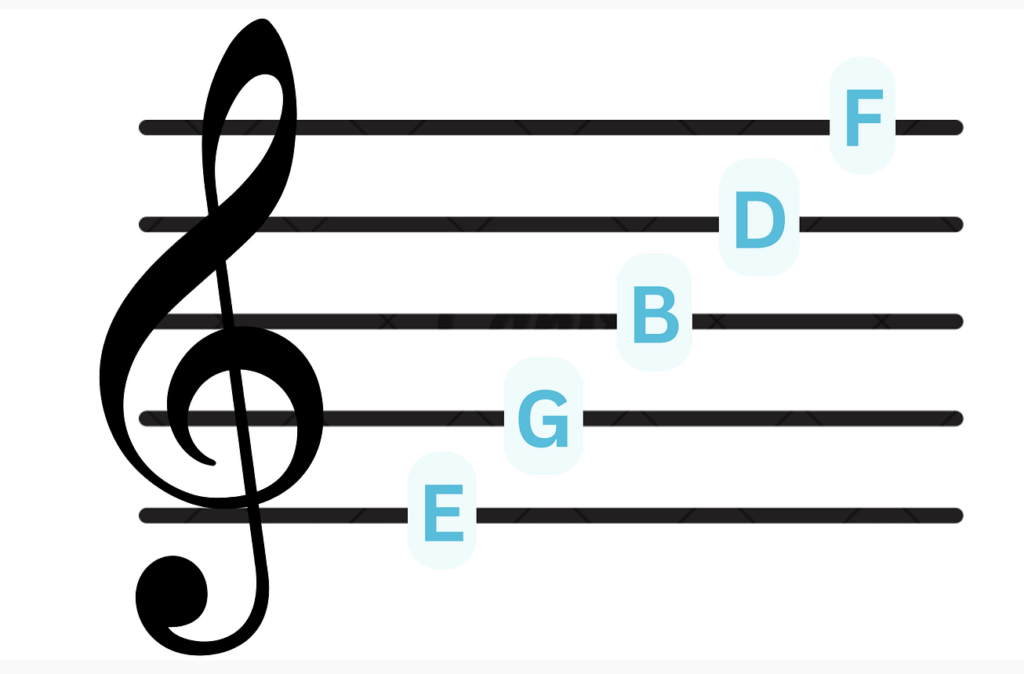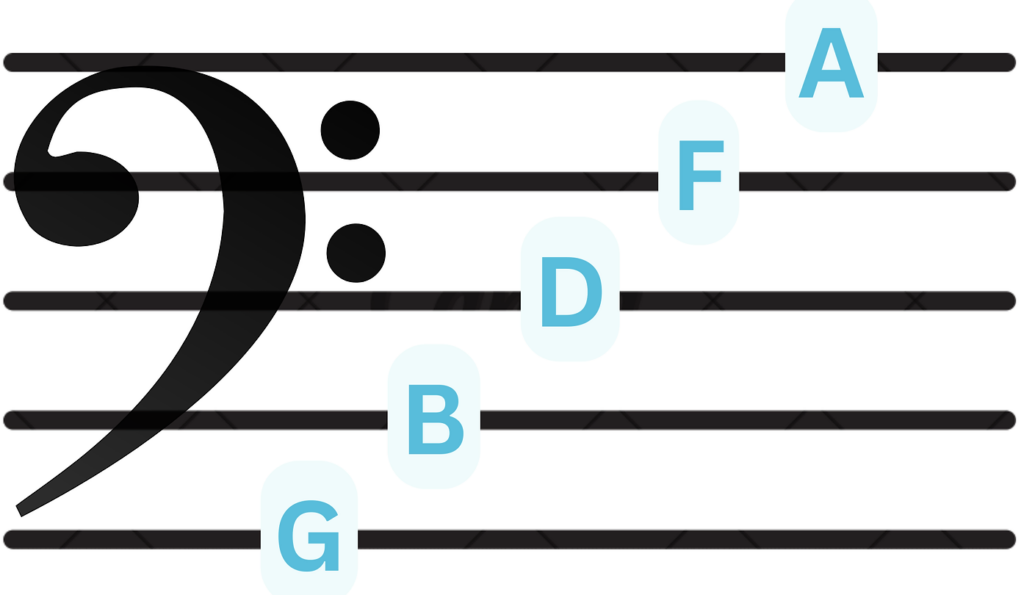
1.1 What is sheet music?
According to Wikipedia, “Sheet music is a handwritten or printed form of musical notation that uses musical symbols to indicate the pitches, rhythms, or chords of a song or instrumental musical piece.”
1.2 Treble clef and bass clef
Treble clef and bass clef are the two most commonly used clefs in music notation. They determine the pitch range of the notes in the staff, allowing the player to recognize and play the corresponding notes accurately.

Treble clef is used to record notes with a pitch higher than the center C. Treble clef is used for sheet music and high-pitched instruments such as guitar, violin, flute, clarinet, saxophone and trumpet

The bass clef is used to record notes with a pitch lower than the center C. The bass clef is used for low-pitched instruments such as bass guitar, double bass, cello, bassoon, trombone, and tuba.
1.3 The function of lines and spaces
The sheet music consists of five lines, each representing a different pitch from bottom to top. When a note is placed on a line, it indicates that the note’s pitch corresponds to the tone represented by that line. Similarly, the five lines create four spaces, each representing a different pitch from bottom to top. When a note falls in a space, it means the pitch of the note matches the tone represented by that space.
1.4 The basic note positions of the treble clef and bass clef

For the treble clef, the lines from bottom to top represent the notes E, G, B, D, and F. A helpful way to remember this is with the phrase “Every Good Boy Does Fine.” The spaces from bottom to top represent F, A, C, and E, which can be easily remembered as the word “FACE.” For the bass clef, the lines from bottom to top represent the notes G, B, D, F, and A. An easy way to remember this is with the phrase “Good Boys Do Fine Always.” The spaces from bottom to top represent the notes A, C, E, and G, which can be easily remembered as “All Cows Eat Grass.”
Reference:
“Sheet Music.” Wikipedia, The Free Encyclopedia, 24 Nov. 2024, https://en.wikipedia.org/wiki/Sheet_music. Accessed 24 Nov. 2024